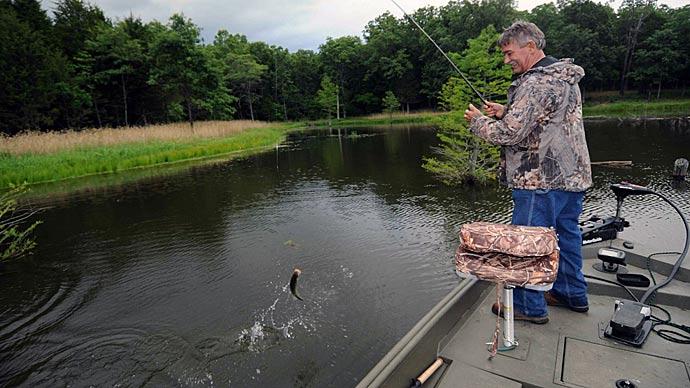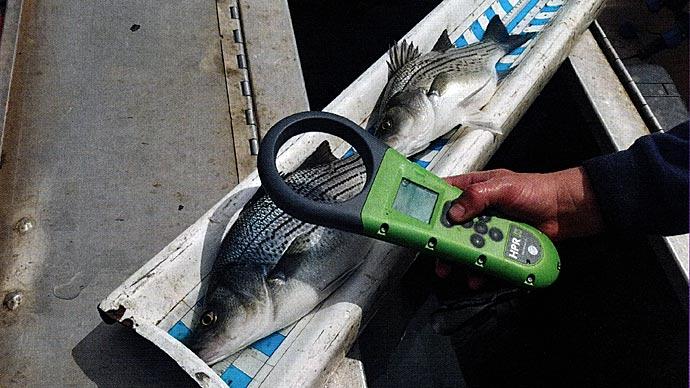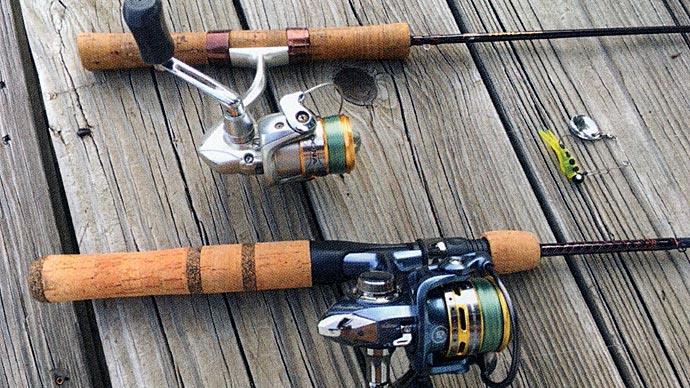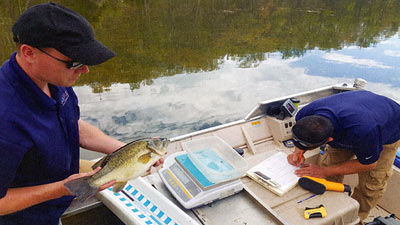
Three years ago, I started on a journey with a client who was interested in growing big bass. He had recently closed on a farm with a seven-acre pond, and was looking to create a special retreat for friends and family.
As you may recall from our article in the July/ August 2016 issue of Pond Boss, this pond is picturesque and full of character, tucked down in the center of the property where rolling hills lead to a perennial creek that cuts through the landscape. The natural topography of the land teamed with a large watershed yielding year- round flow, merging an area destined for a productive pond.
In the spring of 2014, the pond was sampled using an electrofishing boat to determine how the newly purchased, but obviously aging, fishery was doing. The findings depicted a predator heavy waterbody with a depleted forage base. The stunted bass population had an average relative weight (Wr) of only 87, with most fish ranging between 11 and 14 inches in length. The water quality was also assessed, and the findings indicated the pond was eutrophic (nutrient rich), which was supported by the visual cues provided by the unwieldy mass of aquatic vegetation.

After weighing the options for a couple of months, the owner chose to reset the fishery and start fresh. To do this, the water level was lowered eight feet, and rotenone was applied using a Jon boat and special pumps to get the material spread and mixed evenly. By early fall, the pond was ready for stocking fish. Bluegill, Redear Sunfish, Golden Shiners, and Fathead Minnows were all stocked to help establish a solid forage base. Once the fish were stocked, four directional fish feeders began dispensing a heavy regimen of high-quality fish feed to boost the forage base. In an effort to improve the pond's water quality throughout the growing season, a bottom diffused aeration system was installed to de-stratify the water column. This process of de-stratifying the water helped to stabilize the pond's nutrient load, and promote a high-quality plankton bloom. We wanted the plankton bloom for two reasons. First, we wanted to keep sunlight off the bottom to minimize nuisance plant growth. Secondly, newly hatched fish needed the food offered by a healthy plankton bloom.
The next spring (2015), the growth of Curly- leaf Pondweed was significant, so it was treated with herbicides to reduce the shear biomass of plants. The long-term plan was to not eradicate all the vegetation, since the pond was also destined to attract waterfowl and provide outstanding duck hunting opportunities. But, since the fishery was just getting established, nearly all vegetation was eradicated to ensure that a high- quality plankton bloom could be established to boost forage growth rates.
That spring, one-year-old female bass were stocked at a low rate of 15 fish per acre. The bass stocking rate was low, partly to ensure they grew quickly, but also because of the pond's ample supply of fresh water. Although this incoming water was a positive attribute, it came with the cost of allowing upstream fish to enter the pond at any given moment.
With the threat of incoming fish from upstream, the waterbody's future female-only bass population was not likely to remain that way for long. So, to help keep track of the young female bass that were stocked, each of them were fin clipped to provide a visual reference, and tagged with a pit tag to track their growth rates over time.
Water temperatures reached into the 60s during the spring of 2015, and the pond was fertilized using a quick dissolve pond fertilizer to develop a plankton bloom. With some timely filamentous algae treatments, the pond was able to maintain a quality plankton bloom throughout the entire 2015 growing season, which aided in a strong yield of forage fish. Thanks to a great bloom, teamed with high quality fish feed, the forage base thrived.
The fall 2015 electrofishing results showed the female bass were growing at an accelerated rate. In the first six months of life in the pond, the bass grew on average 1.56 pounds. In addition to a healthy forage base and good bass growth, the fall electrofishing results indicated that bass from upstream were already entering the system. Due to all of the volunteer bass entering the pond from upstream, it was critical that we focused on bass harvesting.
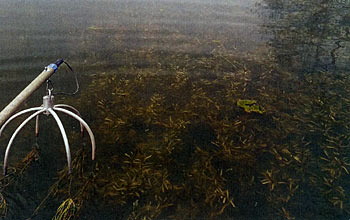
The pond was assessed in the spring of 2016, and the bass had grown an average of 0.25 pounds and 0.5 inches in length over the winter months. For winter in this part of the country, that's amazing. The spring electrofishing results indicated that the forage base was still doing great and the fishery was on track to maintain quality bass growth rates in 2016.
To help ensure continued growth of the bass, the pond was electrofished multiple times that spring, and 156 bass that had entered from upstream over the past year were removed. The incoming bass were doing great, averaging a Wr of 124, but they needed to be removed to prevent having negative impacts on the growth rates of the stocked bass by competing for both food and space. In the process of harvesting these bass, several outstanding young female bass were pit tagged and released.
In addition to the few wild, female bass, the pond was stocked with another generation of female bass to help boost the bass population with desired, young female fish, and to add a new recruitment class. These new bass were pit tagged as well, to help identify them and track growth rates over the years.
Throughout the 2016 growing season, fish food, as well as a high-quality plankton bloom, were utilized to help boost the forage base. Keeping the forage base well-fed has been playing a key role in the fisheries success.
The fishery appeared to be on track as another growing season came to an end. The pond had experienced minimal fishing pressure thus far, so throughout the summer of 2016 we were not certain how well the bass were doing, since we had no angling reports.
That fall, the pond was electrofished, and the sampling effort revealed that the fishery was on track, with the stocked bass averaging a Wr of 119. In the process of assessing the fishery, another 19 wild Largemouth Bass from upstream were harvested.
With things going well, little needed to be done throughout the winter months to keep the fishery on track. The primary item on the winter task list was simply to keep an eye out for otter sign, and trap them once they were present. With some more time under our belts, and four less otters in the world, it was soon the spring of 2017, and water temperatures were beginning to increase. The mild winter left us anticipating slightly higher wintertime fish growth than what we typically observe.
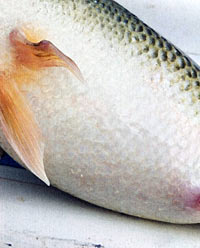
Our 2017 spring electrofishing effort showed that the fishery was thriving. The bass were all piled up in the shallow water, and they put on an exciting acrobatic show as they tried to evade the electric field produced by the electrofishing boat. The young female bass were noticeably stocky and had vibrant colors.
In the process of recapturing 40 of the stocked female bass, we also removed another 12 bass who came in from upstream, bringing the two year total up to 187 bass harvested that entered the waterbody from upstream. The bass growth rates of the initial generation ofbass, which were stocked 24 months prior, averaged 3.33 pounds of growth since being stocked, and had an average Wr of 126. The top performer that was recaptured had grown 4.27 pounds in two years and had a Wr of 123.
Based on the spring findings, it was decided it was not mission-critical to harvest more of the wild bass. Had the owner wanted to push bass growth rates to the limit, it would have been necessary to harvest the remaining wild fish, but because the fishery was flourishing, the owner decided not to do so. As a result, growth rates will be impacted, but conversely, the wild fish will help boost catch rates. And, those big bass can help cull by eating small bass.
In 2017, the pond will begin receiving a greater amount of fishing pressure, so in this process, it is possible that many of these wild fish will be caught through angling efforts and removed from the system.
In just three years, the fishery has been successfully transformed from a stunted, undesired fishery, into a thriving ecosystem that continues to have an incredibly bright future. Although it may feel that the fishery has become a success story, the reality is that at any moment, Mother Nature can disrupt our plans. For that reason, the pond needs to continue to be managed properly to ensure the owner reaches his goal of having a trophy fishery for his friends and family to create memories that will last their lifetimes.
David Beasley is a Fisheries Biologist and the Director of Fisheries at SOLitude Lake Management, an environmental firm providing full service lake, pond, and fisheries management services throughout the United States.
Reprinted with permission from Pond Boss Magazine

